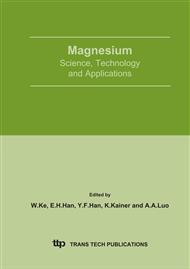p.629
p.633
p.637
p.641
p.645
p.649
p.653
p.657
p.661
Constitutive Model Development and the Numerical Study on the Drawability of AZ31 Sheet
Abstract:
To examine the formability of a magnesium-based alloy AZ31 sheet, a temperature and strain rate related constitutive model for AZ31 sheet was developed based on tensile experiments. The relative parameters were obtained by fitting the equation to the experimental data. The comparison between the fitted and the experimental data proved the effectiveness of the model. Based on this model, the deep drawing process has been simulated with the finite element method and the limit drawing ratio (LDR) of AZ31 sheet was numerically studied. The study result was helpful to the application of the stamping technology for the magnesium alloy sheet.
Info:
Periodical:
Pages:
645-648
Citation:
Online since:
July 2005
Authors:
Price:
Сopyright:
© 2005 Trans Tech Publications Ltd. All Rights Reserved
Share:
Citation:


